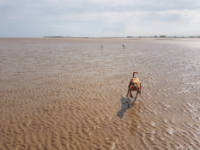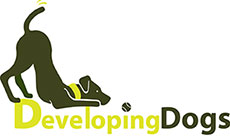Teaching a Recall is like Weaving a Safety Net
One of the principles of effective dog training is to add a proper cue to a behaviour only when it’s understood by the dog, and performed at the level you want it to be done. During the training process you might use various temporary cues (e.g. a treat in your hand to lure the sit becomes a hand signal, and then only when the dog sits every time on the hand signal do you add the verbal cue ‘Sit’ and fade the hand signal).

Reliable Recall
Recall breaks this principle. We usually start using our recall cues almost from the moment we first met our puppy or dog – calling their name, encouraging them towards us, repeating it if they don’t respond. And all too often we increase the difficulty of the recall too fast, and our dogs fail to respond because we haven’t taught them what we think we have. We use the recall only when they are playing with another dog, or heading off to do something we want to interrupt, or it’s the end of the walk. Often we try to recall dogs who barely even look at us outside – if they don’t check in with you voluntarily the chances of them coming when you call are slim.
Teach a check in first; and teach them to like you taking hold of their collar or harness.
Then think of teaching your recall like you’d weave a safety net. Each time you correctly give you recall cue and your dog responds you can add a strand to your net. Each time you give your recall cue and your dog ignores it, then you have to remove a strand. At some point you’re going to need that safety net, so it’s in your interest to weave it with lots of strands, not leave massive gaps where you might fall through.
To build a strong and reliable recall:
1) Practice your recall multiple times a day, in different locations, for fun, not to end fun.
2) Use a long line to prevent your dog from self rewarding off the lead ie going and playing with dogs, or chasing birds, and to keep them safe while they are learning the recall.
3) Don’t use your recall cue in situations you haven’t yet trained for e.g. if you are at the stage of recall practice in the field with no dogs around, then don’t use your recall to call your dog away from playing with his friends.
4) Remember the safety net: practice, practice, practice for the moment you need it.
To work on these skills, and more, to build your reliable recall then book your place on our Reliable Recall course: https://www.developingdogs.co.uk/…/developing-reliable-reca…/

Comments are closed.